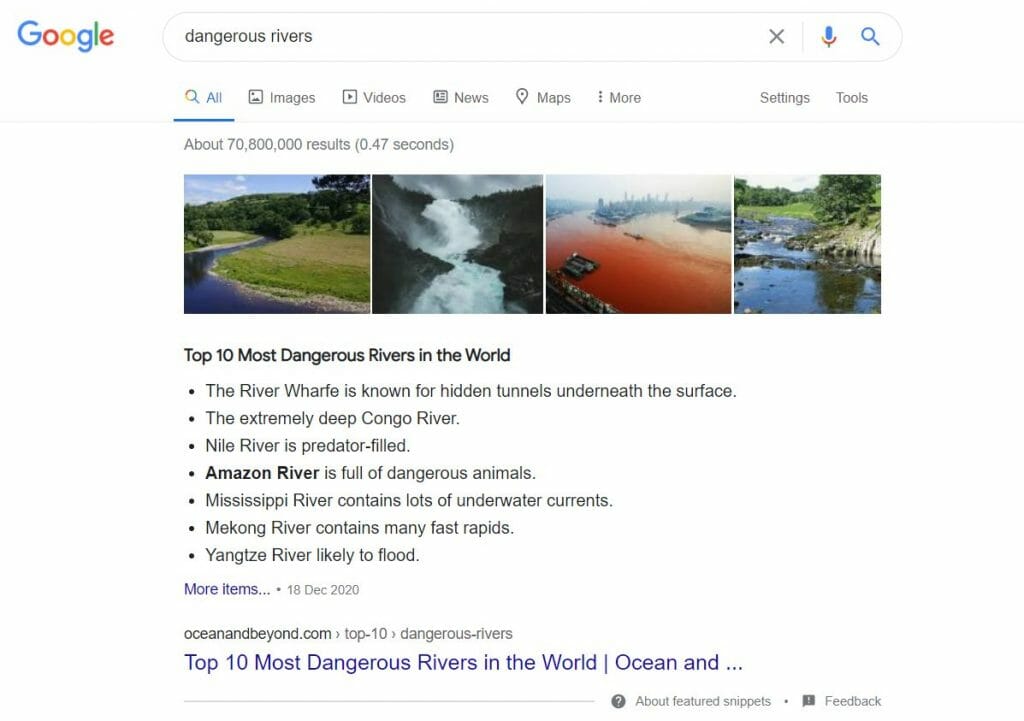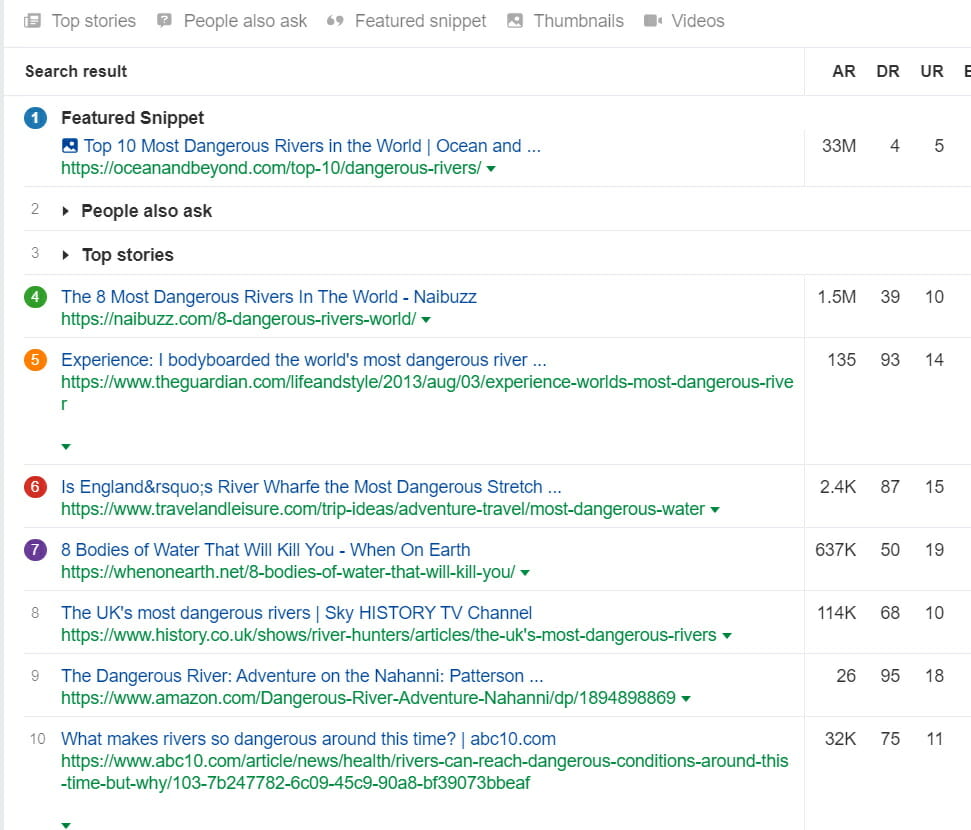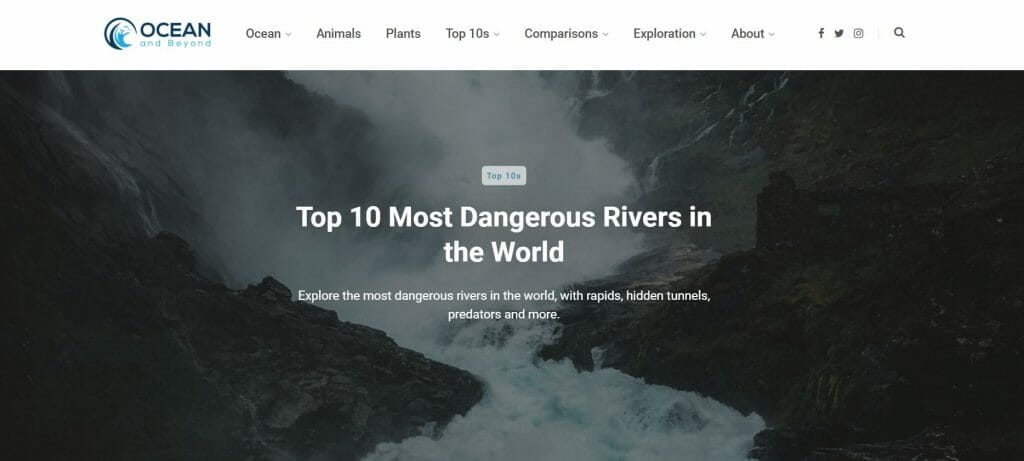One Huge Reason Captions Contribute Great SEO 09 Feb 2021
SEO is always changing and evolving, which is why it is especially important to stay as up to date with any changes that Google makes to its algorithms. The latest most known change comes with the December 2020 update, and the move to using core web vitals as a ranking factor in May 2021. Therefore, if you have not thought about core web vitals yet, now is a good time to do so.
Whenever I discover anything that seems a little quirky, that could help with SEO, I look to share it, and that is exactly what has happened within this article.
On a new site of mine, oceanandbeyond.com (which will be oceaninfo.com in the future), I have an article on the website that lists the most dangerous rivers in the world:
Now, with a website that has such a low DA as this, because it is still very new, I did not expect to gain any traction for quite a while. On average, I find that it takes around 6-7 months to start gaining consistent traffic from evergreen content. Some of the reasons behind this include:
- Getting the website running well (good server, good site speed, good theme etc.)
- Getting enough content for Google to start to understand the niche of the website
- Building authority through high-quality content and backlinks
With this, I was not expecting anything to come of this article yet, even though the SEO of the article is very good.
However, I was surprised to find it had been quite hit for Google:
 There are many things I needed to understand about why this has occurred – it is pretty incredible to get a featured snippet within months of starting a website. I went straight to Ahrefs:
There are many things I needed to understand about why this has occurred – it is pretty incredible to get a featured snippet within months of starting a website. I went straight to Ahrefs:
 What is incredible about this is that the DR (domain rating) and UR (URL rating) are ridiculously low for my Ocean site compared to the competition: it should never be able to get the top spot because of this. What this, therefore, tells me is that:
What is incredible about this is that the DR (domain rating) and UR (URL rating) are ridiculously low for my Ocean site compared to the competition: it should never be able to get the top spot because of this. What this, therefore, tells me is that:
The content of the article is so good that Google has no choice but to rank the page 1st
What makes the page content good? Many reasons. But, one area I optimized heavily is the captions of images.
What you see for the featured snippet are not bullet points in the content, or headings in the content, but the captions of all the images (where there is an image for each of the rivers on that list).
I purposefully made sure each caption had the river’s name and why it was dangerous, both for SEO and user experience (UX).
Typically, for image SEO, alt tags are the most important, as this tells Google and other search engines what the image is about. Captions are generally thought of for better UX – in this situation, this is the first example I’ve ever seen where captions were used for a bullet point featured snippet.
This is a really interesting find in my mind, and should encourage all those creating content online to add SEO optimized captions to all of their images – it can make and break an article!
Will Green
Will created Ask Will Online back in 2010 to help students revise and bloggers make money developing himself into an expert in PPC, blogging SEO, and online marketing. He now runs others websites such as Poem Analysis, Book Analysis, and Ocean Info. You can follow him @willGreeny.
|
Recommended posts
|


